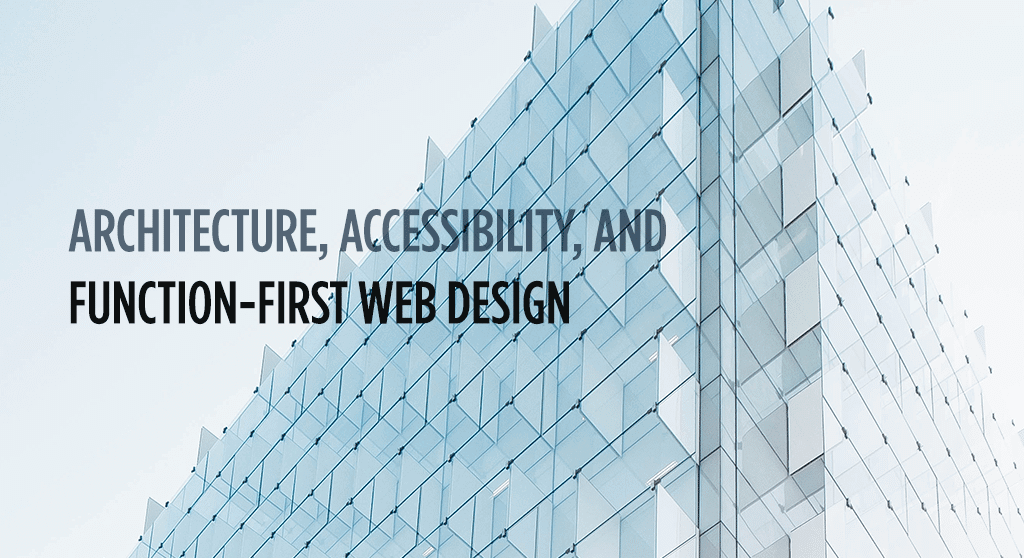
What architecture can teach us about the primacy of usability in web design.
I went to college at the University of Edinburgh. The main campus, George Square, includes several large buildings that were built in the 1960’s, according to a new architectural scheme that was never fully realized. The architects had planned to create a series of walkways above street level to connect the new buildings, but ran out of funding partway through.
As a result, one of these buildings, Appleton Tower, was left with no proper ground-floor entrance. Instead, students entering and exiting the building between lectures all converge on a large flight of stairs that runs parallel to the two double-door exits. The stairway does not have a landing large enough to accommodate this traffic flow, meaning that there’s a consistent bottleneck at the end of each lecture period.
The traffic flow issues aren’t restricted to the poor entrance planning, however. The second floor contains two or three lecture theaters which all open onto the same mezzanine walkway. The end of lectures sometimes results in several hundred students crowding into the same balcony hallway and shuffling past another several hundred students trying to make their way in to the recently vacated halls.
I hated going to classes in Appleton Tower. Finding my way around was a constant struggle, and the traffic jams made me anxious of what might happen in an emergency. My overriding thought every time I entered or exited the building was: how did no one see these problems? How did the design get this bad? Did no one think about the people using this building?
What does architecture have to do with web design?
Maybe you already grasp the intersection of architecture and Michigan web design. Like architecture, websites must be functional before they can be beautiful. And in many ways, they are subject to the same constraints as architects when designing a building. Any building must follow certain principles of accessibility and safety to be usable. A design that impacts any of these features contains fatal flaws.
If you look at any good building design, you should see ramps for wheelchair access, extra-wide bathroom stalls, braille writing under elevator buttons and other rooms signs, fire alarms, smoke detectors, service doors, and more. Halls should be wide enough to accommodate traffic. Exit doors must open outward to prevent crushes in an emergency. The sign pointing to the stairs says “stairs.” The sign pointing to the exit says “exit.”
Similarly, website images must have alt tags for screen readers. Text must be large and readable for the elderly. Navigation menu items follow convention rather than caprice. The space around links contains extra padding so that people with motor control difficulties can click on it. CAPTCHA contain solutions that are not purely image-based. Videos and podcast should contain transcripts and subtitles.
All of this has to do with access: to space, to information, to community. We make these requirements of web designers and architects because we understand that physical and virtual spaces alike are designed for people. If people can’t use them, then the designers and architects have failed at their job.
Creativity thrives on constraint.
I’ve always been a deep believer in the beauty of functionality. If the purpose of art is to enrich (and I know that’s a big philosophical presumption), then clean, usable design surely falls into that category. Embellishment and creativity have their place, but they must come after the design has met the baseline criteria of accessibility and usability. Anything that makes your website less usable runs contrary to the website’s purpose.
Fortunately, any artist will tell you that constraints do not stifle creativity. Quite the contrary: creativity needs a challenge to thrive. Just look at the innovative designs of tiny houses and micro apartments, the eco-friendly structures that focus on clean energy and sustainability, or the solutions to elevator design in the tallest skyscrapers. Lack of constraints leads to waste.
Websites are the same way. Give any creative limitless budget and zero deadlines, and your website will cost a fortune and never get done. Ask them to give you something no one’s seen before, and they’ll deliver something no one can use. That’s because creativity needs a purpose.
Employ creativity toward an end (frictionless user experience), and you’ll achieve something magnetic. Ask your designers to tackle an accessibility issue, and you’ll open your site to a whole new group of people. Use creativity to solve problems, and you make the world a better place.
Websites are for people.
At the end of the day, your website must serve the visitors who come to it. It does not exist for its own sake. If your design sacrifices usability for the sake of being “artistic,” “avant-garde,” or merely “different,” it’s not putting people first.
It’s easy to see how ludicrous dysfunctional design can become when applied to architecture. We intuitively realize that usability in buildings is an intrinsic element of their construction. When a building fails a usability test, we don’t forgive it because it looks nice.
We should apply the same mindset to websites. Usability and accessibility are the most important criteria. Creativity should serve the function of the design. That’s how you put users—people—first.






